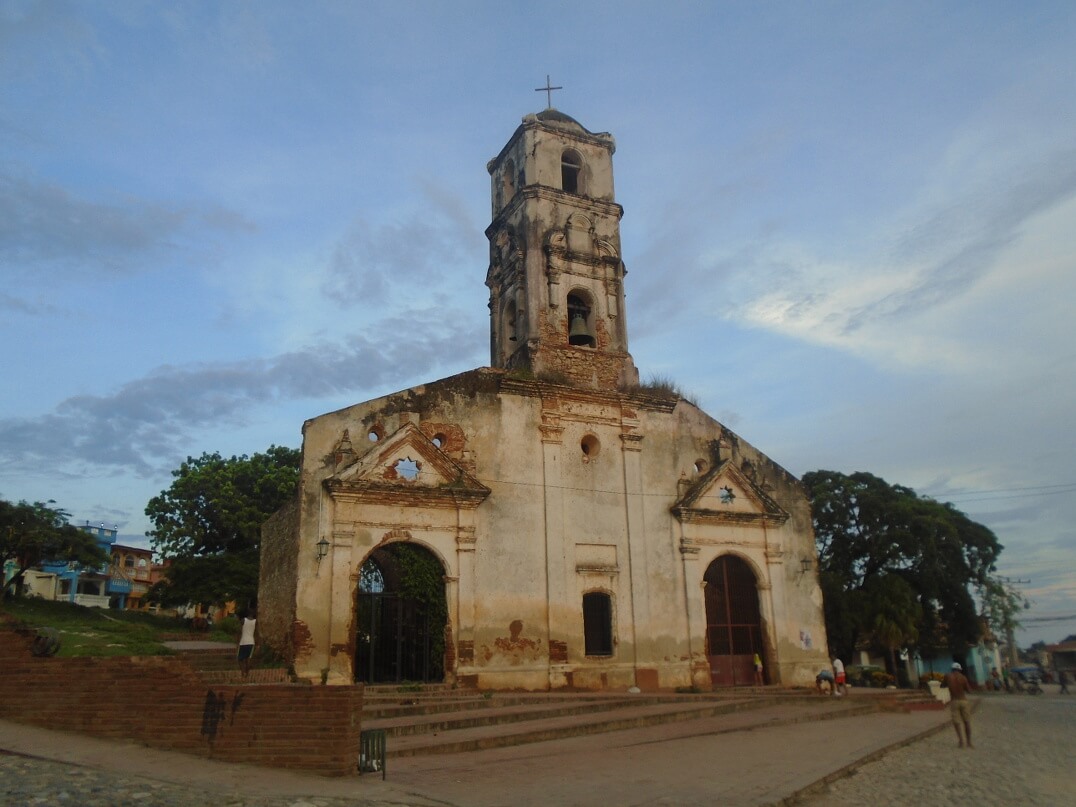Founded in 1513 as a centre for gold mining and farming, Trinidad Cuba reached its peak as a hub for tobacco and sugar production in the early 1800s. After the Cuban sugar trade collapsed in the mid-1800s, Trinidad underwent a long period of decline. However, the town avoided development that may have destroyed the colonial town centre. By the 1950s, the older parts of Trinidad were recognized as major historic artefacts and efforts were made for their preservation and maintenance. Trinidad became a UNESCO World Heritage site in 1988.
The historic centre of Trinidad is the Plaza Mayor. Many small museums and historic buildings dot the square and surrounding area. Main tourist attractions include the Museo Romantico and Museo Historico, restored early nineteenth century houses; the Museum of Colonial Architecture; the Parroquial Mayor church; and the Museo Nacional de la Lucha contra Bandidos, with its famous bell tower.
Trinidad is not just famous for its colonial town centre. Playa Ancon, the main Trinidad beach, is justly recognized as one of Cuba’s best beaches. This beautiful Trinidad beach is about twenty minutes from the main town. Snorkelling and diving trips are available. Also close by are waterfalls, sugar plantations, caves, mountains and an excellent dolphinarium.
The second week in January is Culture Week
At the last weekend in June is the local carnival - the three day Fiestas Sanjuaneras with cowboys on horseback
Casa el delfin is located northeast of the old town, we are close to Plaza Santa Ana and the ruins of Iglesia Santa Ana, which looks ancient, but dates only to 1812. On the square is a former 19th-century prison, Real Cárcel (1844).
Outside Trinidad
There are many great natural vistas and hikes surrounding Trinidad which we can help you access and make the most of.
The nature reserve comprising several national parks, rainforest and mountains is 22km from Trinidad, and 800m above sea level. It offers excellent hiking through limestone mountains, waterfalls, caves, rivers, canyons.
There are many exotic and rare species of plants, birds and animals including Cuba's national bird, the Tocororo. Alternatively try hiking the la Batata trail, which ends in an underground river-cave system with several levels of natural ponds.
Also near by are the Caburni Falls, which entail a 3km hike through coffee plantations and cliffs to the 62m high falls - the highest in Cuba. Allow about four hours for this excursion.
Taxi transfers to El Caburni Waterfalls and Vega Grandes Waterfalls can be arranged for $20 cuc per person (minimum 3 people), El Parque Guanyara for $25cuc per person (minimum 3 people), and El Nicho for $30 cuc per person (minimum 3 people).
We can also offer you a special deal in which you can choose up to four places to visit in a single day for $30 cuc per person (minimum 3 people).
All trips include a stop off at El Mirador - a must see view point.
Please be aware that all national parks have a $10 cuc entrance fee which is payable at each park you visit.
Travel Safe/Practicalities
Telecommunications - Check with your mobile phone provider if your phone will work in Cuba and what the call charges are. You will almost always be charged for calls you make and receive.
Be prepared you may encounter connection difficulties with your phone. Samsung phones in particular are prone to connection difficulties.
MasterCard is not accepted in Cuba so please remember to bring Visa.
Cuba is a cash based economy and you may at times encounter difficulties paying for goods and services with large notes. We advise you travel with notes no larger than 20 cuc.
Skype is blocked at the moment in Cuba. IMO is an alternative that works here and is free to download on android. Yahoo and Outlook maybe difficult to access. The Cuban servers provide a weak connection.
Email and Facebook is the best way to stay in touch.
Power failure can happen, especially in the spring and summer when tropical storms occur frequently.
Wifi is very new here, 1 hour cards cost $2cuc and are available in the Etecsa office, beware of being sold cards costing more.
Scams - Most Cubans are very friendly and helpful, however there are hustlers about also.
Beware of short changing or receiving change in pesos. If you are offered 'Che' money you are being given a peso in exchange for a $ (25 pesos = $1cuc). Cuban convertibles have the word 'convertable' written on every note, there are 100 centavos in $1cuc.
Hustlers work for commission, if you are trying to find your casa and are told, it's not here, doesn’t exist, has moved or closed, do not believe the person. Another con is to pretend to be the owner you are searching for and take you to another casa. If the Casa does not have the name you are searching for, then it's not the case you have booked.
You may also be told it's very far to deter you or get you to use a taxi.
Central Trinidad is very small, most casa’s are no more than a 10 min walk, the historical centre is no more than a 1 km2 in size.
Beach - Bring sunscreen, even in the winter the sun is very strong.



